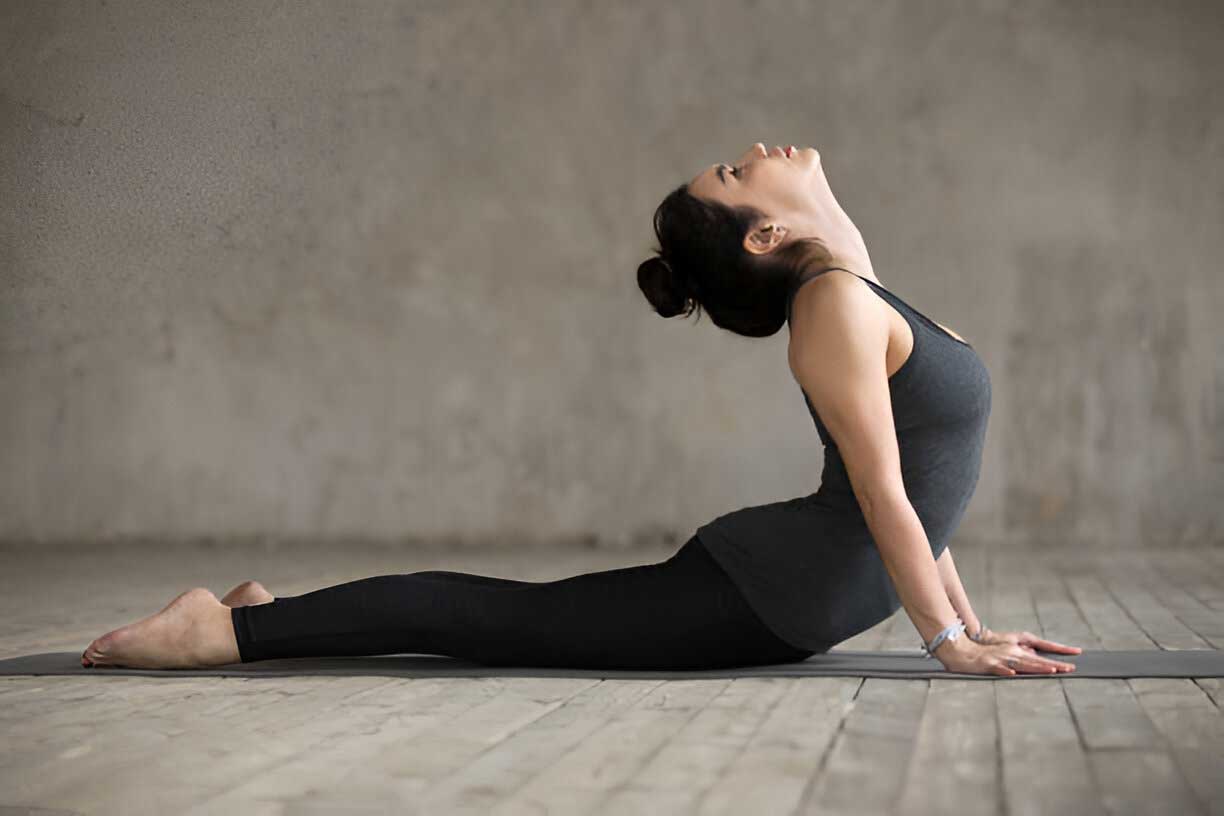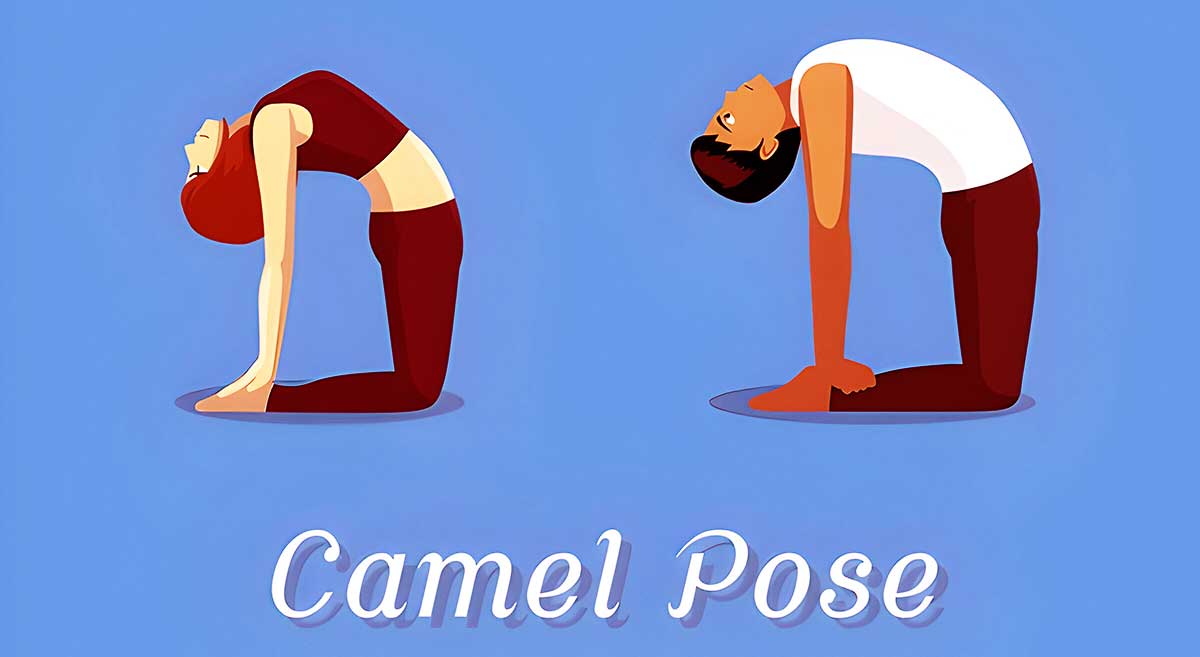Can Yoga Help with Hormonal Imbalances?
Hormonal imbalances can affect many aspects of your health, including mood, energy levels, metabolism, and reproductive health. These imbalances occur when the endocrine system produces too much or too little of a particular hormone, leading to various symptoms such as fatigue, weight gain, mood swings, and more. While medical treatment is often necessary for severe hormonal imbalances, yoga can be an effective complementary therapy. Yoga helps regulate the endocrine system, reduce stress, and promote overall hormonal balance.
This comprehensive guide will explore how yoga can help with hormonal imbalances, including specific yoga poses, pranayama techniques, and lifestyle changes that support endocrine health.
The Role of Hormones in the Body
Hormones are chemical messengers produced by glands in the endocrine system. They regulate many bodily functions, including metabolism, growth, reproduction, and mood. When hormone levels become unbalanced, it can lead to various health issues. Common causes of hormonal imbalances include stress, poor diet, lack of exercise, and certain medical conditions.
Common Symptoms of Hormonal Imbalance:
- Fatigue: Persistent tiredness or lack of energy
- Weight Gain: Unexplained weight gain, especially around the abdomen
- Mood Swings: Irritability, anxiety, or depression
- Sleep Issues: Difficulty falling or staying asleep
- Digestive Problems: Bloating, constipation, or diarrhea
- Irregular Menstrual Cycles: Skipped periods, heavy bleeding, or painful menstruation
How Yoga Helps with Hormonal Imbalances
Yoga is a holistic practice that combines physical postures (asanas), breath control (pranayama), and meditation to promote overall health. Yoga helps balance hormones by:
- Regulating the Endocrine System: Yoga stimulates and balances the glands of the endocrine system, including the thyroid, adrenal, and pituitary glands.
- Reducing Stress: High stress levels can disrupt hormone production. Yoga reduces stress by calming the mind and body, promoting hormonal balance.
- Improving Circulation: Yoga improves blood flow to the glands, enhancing their function and promoting the distribution of hormones throughout the body.
- Promoting Detoxification: Through specific poses and breathing techniques, yoga aids in detoxification, which can help remove toxins that disrupt hormone balance.
- Supporting Mental and Emotional Well-being: Yoga promotes mental clarity, emotional stability, and a sense of well-being, which can positively impact hormone levels.
Yoga Poses for Balancing Hormones
Certain yoga poses are particularly effective in stimulating the endocrine glands and promoting hormonal balance. These poses help regulate the production of hormones and alleviate symptoms associated with hormonal imbalances.
1. Sarvangasana (Shoulder Stand)
Sarvangasana, also known as Shoulder Stand, is a powerful inversion pose that stimulates the thyroid and parathyroid glands. It helps regulate metabolism and supports overall hormonal balance.
How to Perform:
- Lie on your back with your arms by your sides.
- Slowly lift your legs off the ground, bringing them over your head.
- Support your lower back with your hands as you lift your legs and torso into a vertical position.
- Hold the pose for 30 seconds to 1 minute, breathing deeply.
- Slowly lower your legs and return to the starting position.
Benefits:
- Stimulates the thyroid and parathyroid glands
- Regulates metabolism and promotes hormonal balance
- Improves circulation to the neck and shoulders
2. Halasana (Plow Pose)
Halasana, or Plow Pose, is an inversion pose that stretches the neck and stimulates the thyroid gland. This pose helps balance thyroid hormones and supports overall endocrine health.
How to Perform:
- Begin by lying on your back with your arms by your sides.
- Lift your legs off the ground, bringing them over your head until your toes touch the floor behind you.
- Keep your legs straight and support your back with your hands if necessary.
- Hold the pose for 30 seconds to 1 minute, breathing deeply.
- Slowly lower your legs and return to the starting position.
Benefits:
- Stimulates the thyroid and parathyroid glands
- Improves circulation to the neck and upper back
- Promotes relaxation and reduces stress
3. Matsyasana (Fish Pose)
Matsyasana, or Fish Pose, is a backbend that opens the throat and stimulates the thyroid and parathyroid glands. This pose is particularly beneficial for individuals with hypothyroidism.
How to Perform:
- Lie on your back with your legs extended and arms by your sides.
- Place your hands under your hips, palms facing down.
- Lift your chest and arch your back, resting the crown of your head on the floor.
- Hold the pose for 30 seconds to 1 minute, breathing deeply.
- Slowly release the pose and return to the starting position.
Benefits:
- Stimulates the thyroid and parathyroid glands
- Opens the throat and chest, improving circulation
- Relieves tension and reduces stress
4. Bhujangasana (Cobra Pose)
Bhujangasana, or Cobra Pose, is a gentle backbend that stimulates the adrenal glands, which are responsible for producing stress hormones like cortisol. This pose helps balance cortisol levels and reduce stress.
How to Perform:
- Lie on your stomach with your legs extended and feet together.
- Place your hands under your shoulders, palms facing down.
- Inhale and lift your chest off the ground, keeping your elbows slightly bent.
- Hold the pose for 15 to 30 seconds, breathing deeply.
- Slowly release the pose and return to the starting position.
Benefits:
- Stimulates the adrenal glands and regulates cortisol levels
- Reduces stress and promotes relaxation
- Strengthens the spine and improves flexibility
5. Ustrasana (Camel Pose)
Ustrasana, or Camel Pose, is a deep backbend that stimulates the thyroid and adrenal glands. This pose helps improve hormonal balance by enhancing circulation to these glands and reducing stress.
How to Perform:
- Begin by kneeling on the floor with your knees hip-width apart.
- Place your hands on your lower back for support.
- Slowly arch your back, reaching your hands towards your heels.
- Tilt your head back, opening your throat.
- Hold the pose for 30 seconds to 1 minute, breathing deeply.
- Slowly release the pose and return to the starting position.
Benefits:
- Stimulates the thyroid and adrenal glands
- Improves circulation and promotes hormonal balance
- Reduces stress and enhances flexibility
6. Setu Bandhasana (Bridge Pose)
Setu Bandhasana, or Bridge Pose, is a gentle backbend that stimulates the thyroid gland by opening the chest and throat. This pose is beneficial for balancing thyroid hormones and relieving stress.
How to Perform:
- Lie on your back with your knees bent and feet flat on the floor, hip-width apart.
- Place your arms by your sides, palms facing down.
- Lift your hips towards the ceiling, rolling your shoulders underneath you.
- Clasp your hands together under your back and hold the pose for 30 seconds to 1 minute, breathing deeply.
- Slowly release the pose and return to the starting position.
Benefits:
- Stimulates the thyroid gland and regulates hormone levels
- Opens the chest and throat, improving circulation
- Relieves stress and promotes relaxation
7. Paschimottanasana (Seated Forward Bend)
Paschimottanasana, or Seated Forward Bend, is a calming pose that stimulates the pituitary gland, which controls the release of various hormones in the body. This pose helps balance hormones and promote overall endocrine health.
How to Perform:
- Sit on the floor with your legs extended in front of you.
- Inhale and lengthen your spine, reaching your arms overhead.
- Exhale and fold forward, reaching for your feet or ankles.
- Hold the pose for 1 to 3 minutes, breathing deeply.
- Slowly release the pose and return to the starting position.
Benefits:
- Stimulates the pituitary gland and regulates hormone production
- Calms the mind and reduces stress
- Improves flexibility and promotes relaxation
Pranayama for Hormonal Balance
Pranayama, or breath control, is a vital aspect of yoga that helps regulate the body’s energy and promote hormonal balance. Specific pranayama techniques can support the endocrine system and reduce stress.
1. Nadi Shodhana (Alternate Nostril Breathing)
Nadi Shodhana, or Alternate Nostril Breathing, is a balancing pranayama technique that helps regulate the flow of energy in the body. This practice can promote hormonal balance and reduce stress.
How to Perform:
- Sit in a comfortable position with your spine straight.
- Close your right nostril with your thumb and inhale deeply through your left nostril.
- Close your left nostril with your ring finger and exhale through your right nostril.
- Inhale through your right nostril, close it, and exhale through your left nostril.
- Continue this alternate nostril breathing for 5 to 10 minutes.
Benefits:
- Balances the flow of energy in the body
- Promotes hormonal balance and reduces stress
- Enhances mental clarity and relaxation
2. Kapalbhati Pranayama (Skull Shining Breath)
Kapalbhati Pranayama, also known as Skull Shining Breath, is a powerful breathing technique that helps detoxify the body, improve circulation, and boost metabolism. This practice can support hormonal balance by reducing stress and enhancing energy levels.
How to Perform:
- Sit in a comfortable position with your spine straight.
- Inhale deeply through your nose, expanding your abdomen.
- Exhale forcefully through your nose, contracting your abdominal muscles with each exhalation.
- Continue this rapid exhalation for 1 to 3 minutes, then relax.
Benefits:
- Detoxifies the body and promotes circulation
- Boosts metabolism and supports hormonal balance
- Enhances overall well-being and reduces stress
3. Bhramari Pranayama (Bee Breath)
Bhramari Pranayama, or Bee Breath, is a calming pranayama technique that involves making a humming sound during exhalation. This practice helps reduce stress, calm the mind, and support hormonal balance.
How to Perform:
- Sit in a comfortable position with your spine straight.
- Close your eyes and place your index fingers on the cartilage of your ears.
- Inhale deeply through your nose.
- Exhale slowly, making a humming sound like a bee.
- Continue this practice for 5 to 10 minutes.
Benefits:
- Reduces stress and calms the mind
- Supports hormonal balance and promotes relaxation
- Enhances mental clarity and emotional stability
Meditation and Mindfulness for Hormonal Balance
Meditation and mindfulness practices are essential components of yoga that help calm the mind, reduce stress, and promote emotional well-being. These practices can positively impact hormone levels by reducing stress and promoting a sense of balance.
1. Mindfulness Meditation
Mindfulness meditation involves focusing on the present moment and observing your thoughts and sensations without judgment. This practice helps reduce stress, improve mental clarity, and support overall hormonal balance.
How to Practice:
- Sit in a comfortable position with your spine straight.
- Close your eyes and focus on your breath, observing each inhalation and exhalation.
- If your mind wanders, gently bring your attention back to your breath.
- Practice mindfulness meditation for 10 to 20 minutes daily.
Benefits:
- Reduces stress and promotes emotional balance
- Supports hormonal balance and overall health
- Enhances mental clarity and relaxation
2. Guided Visualization
Guided visualization is a meditation technique that involves imagining positive, healing images to promote relaxation and well-being. This practice can help reduce stress and support hormonal balance.
How to Practice:
- Sit or lie down in a comfortable position and close your eyes.
- Imagine a warm, healing light surrounding your body, promoting balance and health.
- Visualize the light spreading throughout your body, bringing relaxation and well-being.
- Continue this visualization for 10 to 20 minutes daily.
Benefits:
- Promotes relaxation and reduces stress
- Supports hormonal balance and overall health
- Enhances emotional well-being and mental clarity
Lifestyle Changes to Support Hormonal Balance
In addition to yoga and pranayama, certain lifestyle changes can support hormonal balance and complement your yoga practice.
1. Balanced Diet
A balanced diet plays a crucial role in supporting hormonal balance. Include foods rich in essential nutrients, such as leafy greens, nuts, seeds, and lean proteins, to promote hormonal health. Avoid processed foods, excessive sugar, and refined grains that can disrupt hormonal balance.
2. Regular Exercise
Regular physical activity, in addition to yoga, helps maintain a healthy weight, improve metabolism, and reduce stress. Incorporate aerobic exercises like walking, swimming, or cycling into your routine to support overall health.
3. Adequate Sleep
Adequate sleep is essential for maintaining hormonal balance and supporting overall health. Aim for 7 to 9 hours of quality sleep each night to promote well-being.
4. Stress Management
Managing stress is crucial for maintaining hormonal balance. In addition to yoga and meditation, consider incorporating relaxation techniques such as deep breathing, journaling, or spending time in nature into your daily routine.
Conclusion
Yoga offers a holistic and effective approach to managing hormonal imbalances by regulating the endocrine system, reducing stress, and promoting overall well-being. By incorporating specific yoga poses, pranayama techniques, and meditation practices into your daily routine, you can support hormonal balance, alleviate symptoms of imbalance, and enhance your overall quality of life.
In addition to yoga, adopting a balanced diet, regular exercise, adequate sleep, and stress management practices can further support hormonal balance and complement your yoga practice. Whether you’re dealing with thyroid issues, adrenal fatigue, or simply looking to maintain optimal hormonal health, yoga provides a natural and effective way to promote well-being.
With consistent practice and a mindful approach, yoga can become a powerful tool in your journey toward better hormonal health and a balanced, harmonious life.











